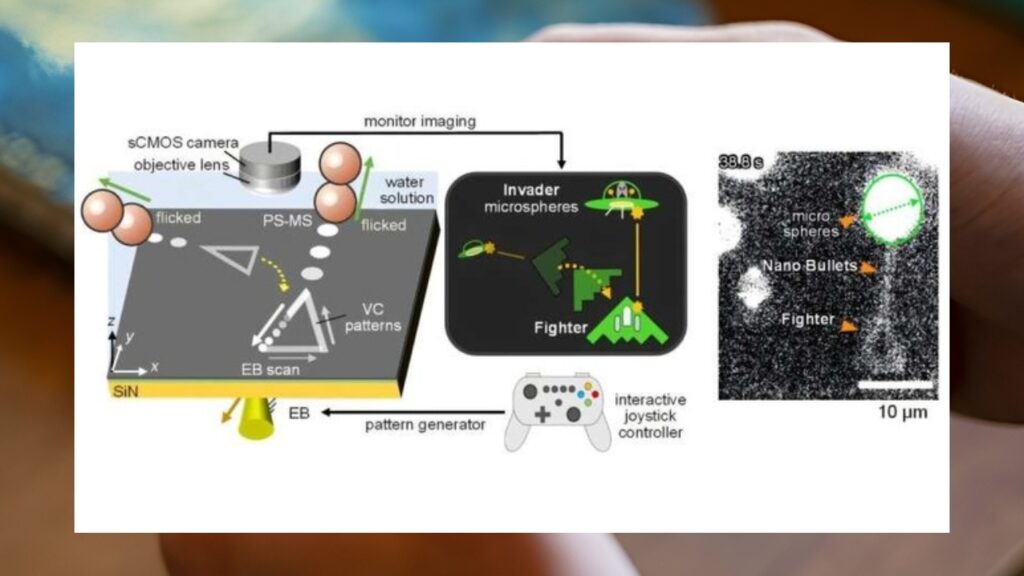Researchers at Nagoya University in Japan have developed “the world’s smallest shooting game”. The revolutionary game allows players to interact with physical objects as small as a billionth of a millimeter. So how was the game produced? Details in our news…
The world’s smallest game from Japan! So how does it work?
In fact, this extraordinary game is a very important step forward in the field of nano-mixed reality (nano-MR). Nano-MR is a technology that combines the digital world with the physical world on a nanometer scale. Using a standard controller, players can command a tiny digital ship and fire nanometric projectiles to manipulate a physical cannon just a few microns in size.

In the game, you maneuver a spaceship and try to propel it by firing projectiles at real nanoparticles. The system enables real-time interaction between digital data and nano-physical objects, says Professor Takayuki Hoshino, lead developer of the project.
Nano-MR integrates digital and physical elements at the nanometer scale using high-speed electron beams. These electron beams work like “invisible hands” that control the movement of nanoparticles, creating complex electric fields and optical image patterns on the screen.
In the game, the spaceship and projectiles are digitally projected onto the screen, while the targets are real microscopic polystyrene balls. Using a joystick, players manipulate a scanning pattern of a high-speed electron beam, which translates into the movement of a triangular virtual spaceship on the screen. The aim is to use this ship to shoot or push “enemies”, directly affecting the movement of real physical objects.
In fact, the implications of this technology extend far beyond entertainment. “We could 3D print objects created in real time and transform the world of 3D printing. Or, with the same technique, we can send toxic agents to virus cells in living organisms and destroy them.”













